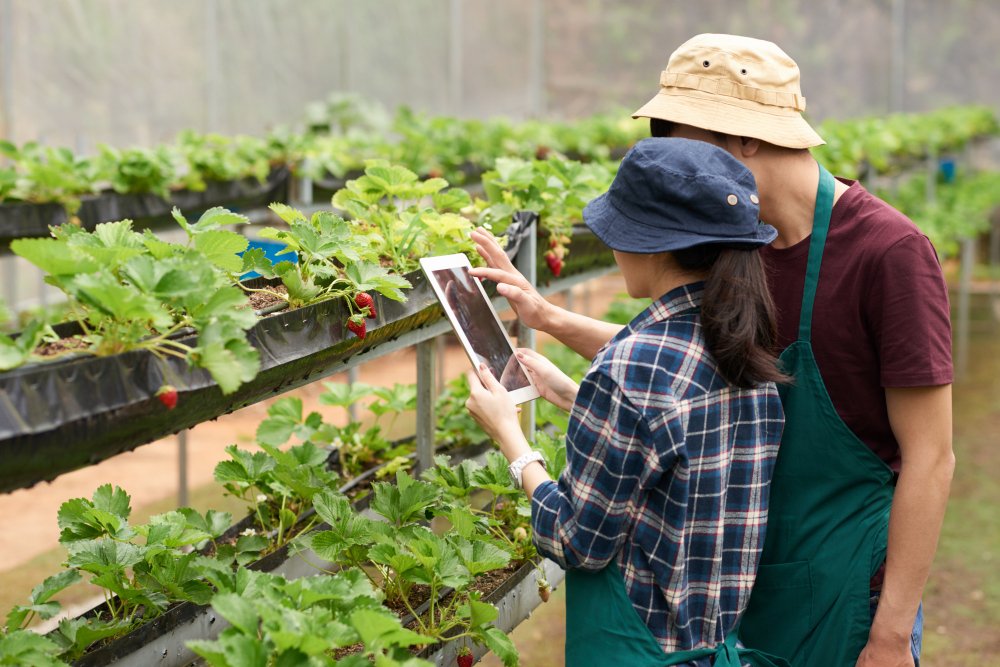As the world grapples with climate change, pollution, and growing food demands, the focus on sustainable agriculture has never been more urgent. Asia, home to over 4 billion people, is playing a leading role in the movement towards organic farming and agroecology. This shift towards sustainable practices is not just about producing food, but also about preserving the environment, improving farmers’ livelihoods, and ensuring food security for future generations. In this article, we’ll explore how Asia is leading the way in organic farming and agroecology and why these practices are critical for the region and the world.
1. Introduction to the Sustainable Agriculture Movement
The sustainable agriculture movement is a global shift towards farming practices that prioritize environmental health, social equity, and economic viability. As traditional farming methods often degrade the soil, water, and ecosystems, organic farming and agroecology are emerging as powerful alternatives. These practices rely on biodiversity, natural inputs, and sustainable techniques to produce healthy food while minimizing harm to the planet.
In Asia, sustainable agriculture is not just a trend—it’s a necessity. With rising populations, limited arable land, and the threat of climate change, the need for more sustainable farming practices is critical. Fortunately, Asia is already making great strides in embracing organic farming and agroecology, setting an example for the rest of the world.
2. The Rise of Organic Farming in Asia
Organic farming in Asia has grown dramatically over the past few decades. Countries like India, China, and Thailand are at the forefront, expanding organic farming both in terms of area and production. According to the International Federation of Organic Agriculture Movements (IFOAM), Asia has seen a significant increase in the amount of land certified for organic farming, with India being one of the largest producers of organic cotton and China leading in organic tea.
One of the reasons for this growth is the increasing demand for organic food. Consumers are more aware than ever about the health risks associated with pesticides, fertilizers, and genetically modified organisms (GMOs). As a result, many countries in Asia are shifting towards organic farming as a healthier and more sustainable alternative to conventional agriculture.
3. What is Agroecology and Why It Matters?
Agroecology is a holistic approach to farming that integrates ecological principles with agricultural practices. It focuses on working with nature, using local resources, and promoting biodiversity. Agroecological practices are designed to improve soil fertility, conserve water, reduce pesticide use, and protect the environment.
In Asia, agroecology is gaining traction as an alternative to industrial farming practices that rely heavily on chemical inputs and monoculture. Agroecological systems, such as intercropping, crop rotation, and agroforestry, help to maintain healthy ecosystems and improve food security. By working with nature rather than against it, agroecology provides farmers with sustainable ways to increase their productivity while also protecting the environment.
4. Asia’s Key Players in Sustainable Agriculture
Several countries in Asia are leading the way in organic farming and agroecology. India, China, and Japan are among the top contributors to the movement, each with its own approach to sustainable agriculture.
- India: India has made significant strides in promoting organic farming. The government has implemented programs like the National Programme for Organic Production (NPOP), which has helped increase organic certification and market access for farmers. Additionally, states like Sikkim have become pioneers in organic farming, with Sikkim becoming the first fully organic state in India.
- China: China, known for its massive agricultural output, is also investing heavily in organic farming. With growing concerns over food safety and environmental degradation, China is embracing organic farming practices. The government has introduced policies to encourage organic certification, and many farmers are adopting agroecological practices to improve yields and sustainability.
- Japan: Japan is another Asian leader in sustainable agriculture. The Japanese government supports organic farming through subsidies and technical assistance. Moreover, the country’s farmers are integrating agroecological practices, including traditional methods such as natural pest control and soil conservation, into their farming systems.
5. Challenges Faced by Farmers in Transitioning to Organic Practices
While the benefits of organic farming and agroecology are clear, the transition is not always easy. Many farmers face significant challenges when moving from conventional to organic farming. One of the biggest hurdles is the initial cost. Organic certification, training, and the transition period can be expensive, especially for small-scale farmers who lack the resources to invest in these changes.
Another challenge is knowledge and access to information. Although agroecology is a growing movement, many farmers still lack the necessary training to implement sustainable practices effectively. There is also a lack of infrastructure and support for organic markets in many regions, which makes it difficult for farmers to sell their produce.
6. Technological Innovations Supporting Sustainable Agriculture
Technology is playing a key role in advancing organic farming and agroecology in Asia. Innovations in sustainable farming technologies, such as precision agriculture tools, drip irrigation, and organic fertilizers, are helping farmers reduce their reliance on chemical inputs and increase efficiency.
In addition, mobile apps and digital platforms are making it easier for farmers to access information on sustainable practices, weather patterns, and market prices. These technologies are bridging the knowledge gap and empowering farmers to make informed decisions that benefit both their livelihoods and the environment.
7. Government Policies and Initiatives Promoting Agroecology
Governments across Asia are recognizing the importance of sustainable agriculture and are implementing policies to support it. In India, the government has introduced subsidies for organic farming, while in China, there are tax breaks for organic farmers. Countries like the Philippines and Thailand are also providing technical support and financial incentives for farmers transitioning to organic practices.
The United Nations’ Sustainable Development Goals (SDGs) also emphasize the importance of sustainable agriculture. Many Asian countries are aligning their agricultural policies with these global goals, focusing on reducing hunger, improving food security, and promoting environmental sustainability.
8. Case Studies: Successful Organic and Agroecological Projects in Asia
There are several success stories from across Asia that demonstrate the potential of organic farming and agroecology. In India, the state of Sikkim has become a model for organic farming, with all of its agricultural land certified as organic. The state’s farmers have seen improvements in soil health and increased yields as a result of adopting sustainable practices.
In China, the Organic Food Development Foundation has worked with farmers to promote organic farming practices in rural areas. The program has helped thousands of farmers transition to organic farming, improving their incomes and reducing the environmental impact of their agricultural activities.
9. The Future of Sustainable Agriculture in Asia
The future of sustainable agriculture in Asia looks promising. As demand for organic and sustainably produced food continues to grow, more countries in the region are likely to adopt organic farming and agroecology. Technological advancements and government support will further drive this transition, making sustainable agriculture more accessible to farmers at all levels.
With increasing awareness of the environmental and health benefits of sustainable farming, Asia is well-positioned to lead the way in the global movement towards greener, more sustainable food production.
10. Conclusion: Asia’s Role in Shaping Global Sustainable Farming Practices
Asia’s role in the sustainable agriculture movement cannot be overstated. The region’s vast agricultural diversity, combined with its growing commitment to organic farming and agroecology, is setting an example for the rest of the world. By investing in sustainable practices, Asia is not only improving the health of its soil and farmers but also contributing to global efforts to combat climate change and ensure food security for future generations.
As Asia continues to embrace organic farming and agroecology, its leadership in sustainable agriculture will play a crucial role in shaping the future of global food production.


